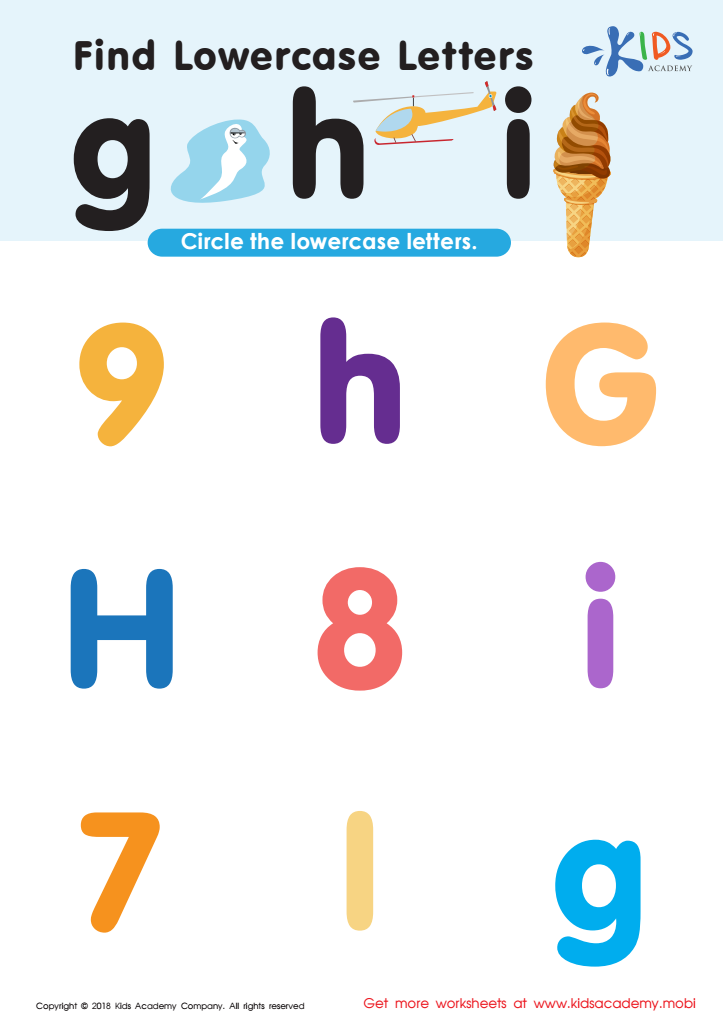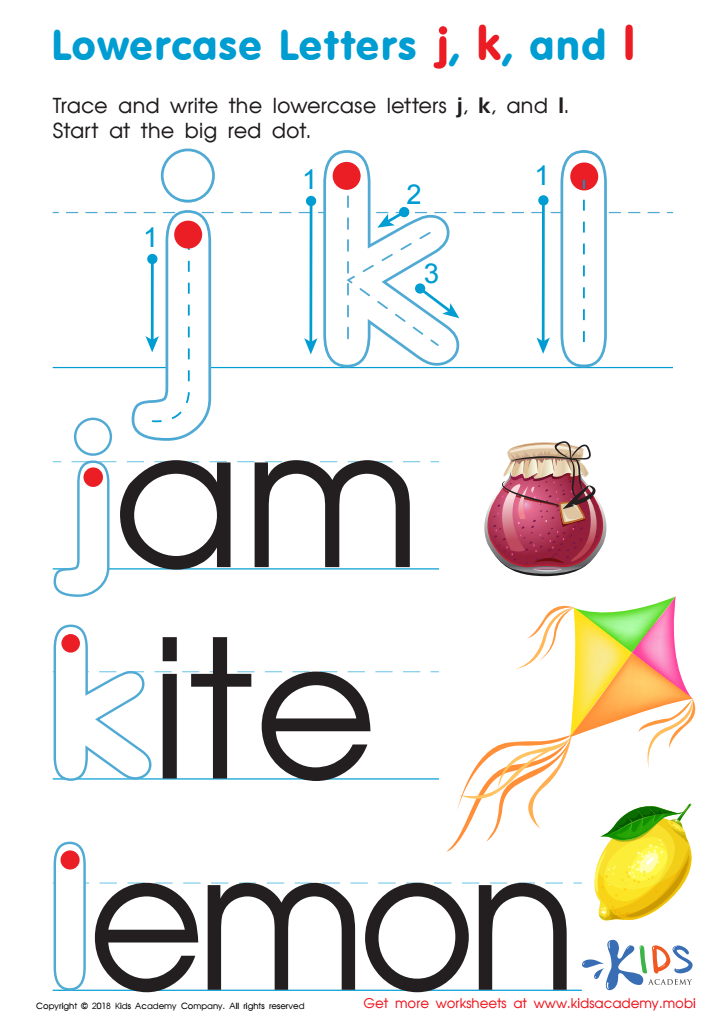Alphabet sequencing Normal Letter Recognition Worksheets for Ages 4-6
3 filtered results
-
From - To
Introduce young learners to the exciting world of letters with our comprehensive Alphabet Sequencing Normal Letter Recognition Worksheets for Ages 4-6. These engaging, educational printable worksheets are expertly designed to enhance your child's letter recognition and sequencing skills. Perfect for preschool and kindergarten children, each worksheet provides fun, hands-on activities that promote early literacy. From identifying letters to arranging them in the correct order, our resources make learning the alphabet a breeze. Keep your child's educational journey on track and help them build foundational reading skills with these vibrant, interactive worksheets. Download now and watch your child thrive!


Find Lowercase Letters g h i Worksheet


Uppercase Letters Maze Worksheet


Lowercase Letters j k l Worksheet
Parents and teachers should care about alphabet sequencing and normal letter recognition for ages 4-6 because these skills are foundational for literacy development. Mastery of the alphabet including the ability to identify, understand, and sequence letters is crucial for emergent reading and writing skills. During the ages of 4-6, children are in a critical stage of cognitive development where they absorb new information quickly.
Alphabet sequencing helps children understand the order and placement of letters, which is essential for word formation and structure. It enhances their ability to predict and decode new words, fostering phonemic awareness. Phonemic awareness, the understanding that words are made up of individual sounds, is vital for reading fluency and comprehension. When children recognize letters and their corresponding sounds, they can begin to blend these sounds to form words, creating a strong base for fluency in reading.
Moreover, early letter recognition improves fine motor skills through activities like writing, which in turn supports broader learning opportunities. Strong literacy skills established at an early age are often linked to higher academic performance in later years. Missing these fundamental steps can lead to difficulties not just in reading and writing, but in learning across all subjects. Therefore, ensuring children develop these skills is key for their overall educational success and lifelong learning.
 Assign to My Students
Assign to My Students















